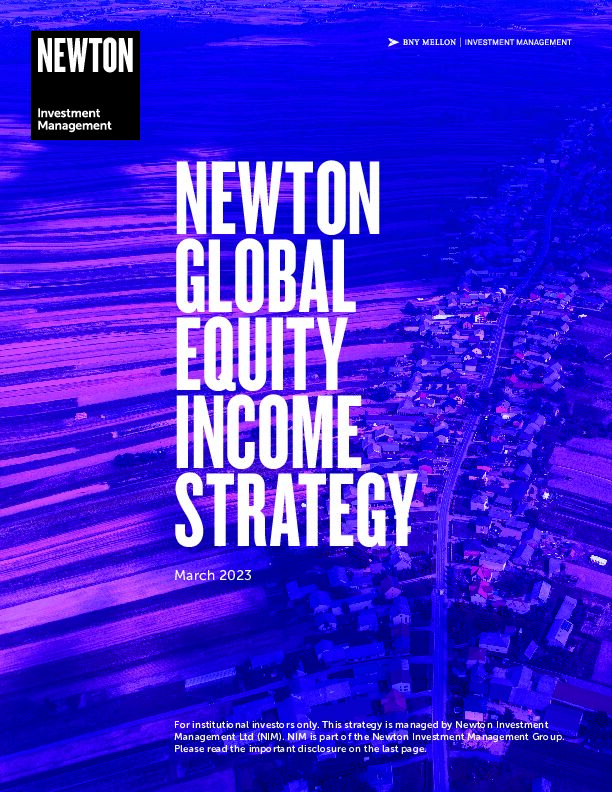Our Philosophy and Process
Our investment philosophy acknowledges that investing is inherently probabilistic in nature. We believe a focus on dividend sustainability leans the statistics to our advantage, reflecting the powerful evidence that dividends, and the reinvestment of dividends, represent the dominant sources of long-term real returns in markets across the world. Compelling evidence also suggests those companies with the discipline of paying a dividend tend to allocate capital more efficiently and maintain better earnings growth.
The disciplines of our investment process aim to capture and enhance the statistical tailwind of dividends in three ways. First, our strict yield discipline seeks to ensure that every stock and the portfolio as a whole always compound at a higher yield than that of the market. This provides an objective discipline which prevents stock ‘love affairs’ and other behavioral impediments. Second, we look to enhance this tailwind by ensuring underlying cash flows are sustainable and have the ability to suffer without threatening the dividend. Third, we aim to enhance this further still by capturing a valuation margin of safety.
Individually, these three features of yield, dividend sustainability and valuation are statistically attractive and easy to find. However, in combination they are rare and typically require some element of controversy. Our process therefore focuses on identifying key ‘buckets’ of controversy where we believe the market repeatedly offers up such opportunities.
Material and relevant ESG risks, issues and opportunities are considered as part of the investment research process.
A constantly evolving and forward-looking approach seeks to anticipate change, manage risk, and identify opportunities.
Strategy Profile
-
Objective
-
The strategy seeks to outperform the MSCI World NDR Index by more than 2% per annum over rolling 5-year periods on a total-return basis, by achieving income and capital growth from a global portfolio comprised of companies that typically yield at least 25% greater than the FTSE World Index yield.
-
Performance benchmark
-
MSCI World NDR Index (total return), FTSE World Index (yield criteria)
-
Typical number of equity holdings
-
40 to 70
-
Yield discipline
- Every new holding in a global equity income portfolio typically has a prospective yield 25% greater than the benchmark at the point of purchase. Any holding whose prospective yield falls below the benchmark yield will trigger our sale discipline process.
-
Strategy inception
-
January 1, 2006
Investment Team
-
- Our Global Equity Income strategy is managed by our equity income team. In-house research analysts are at the core of our investment process, and our multidimensional research platform spans fundamental, thematic, ESG, quantitative, geopolitical, investigative and private-market research to promote better-informed investment decisions.
Want to find out more?
Your capital may be at risk. The value of investments and the income from them can fall as well as rise and investors may not get back the original amount invested.
The outperformance target stated is net of fees, for indicative purposes only, and may be changed without notice. Targeted return is generally aspirational in nature, not necessarily based on criteria and assumptions, and is not a guarantee of future returns.
Newton will make investment decisions that are not based solely on ESG considerations. It is one of many inputs into the fundamental analysis. Other attributes of an investment may outweigh ESG considerations when making investment decisions. The way that material ESG considerations are assessed may vary depending on the asset class and strategy involved. As of September 2022, the research team performs ESG analysis on equity securities prior to their addition to Newton’s Research Recommended List (RRL). ESG reviews are not performed for all fixed income securities. The portfolio managers may purchase equity securities that are not included on the RRL and which do not have ESG reviews. Not all securities held by Newton’s strategies have an ESG review completed prior to investment.







